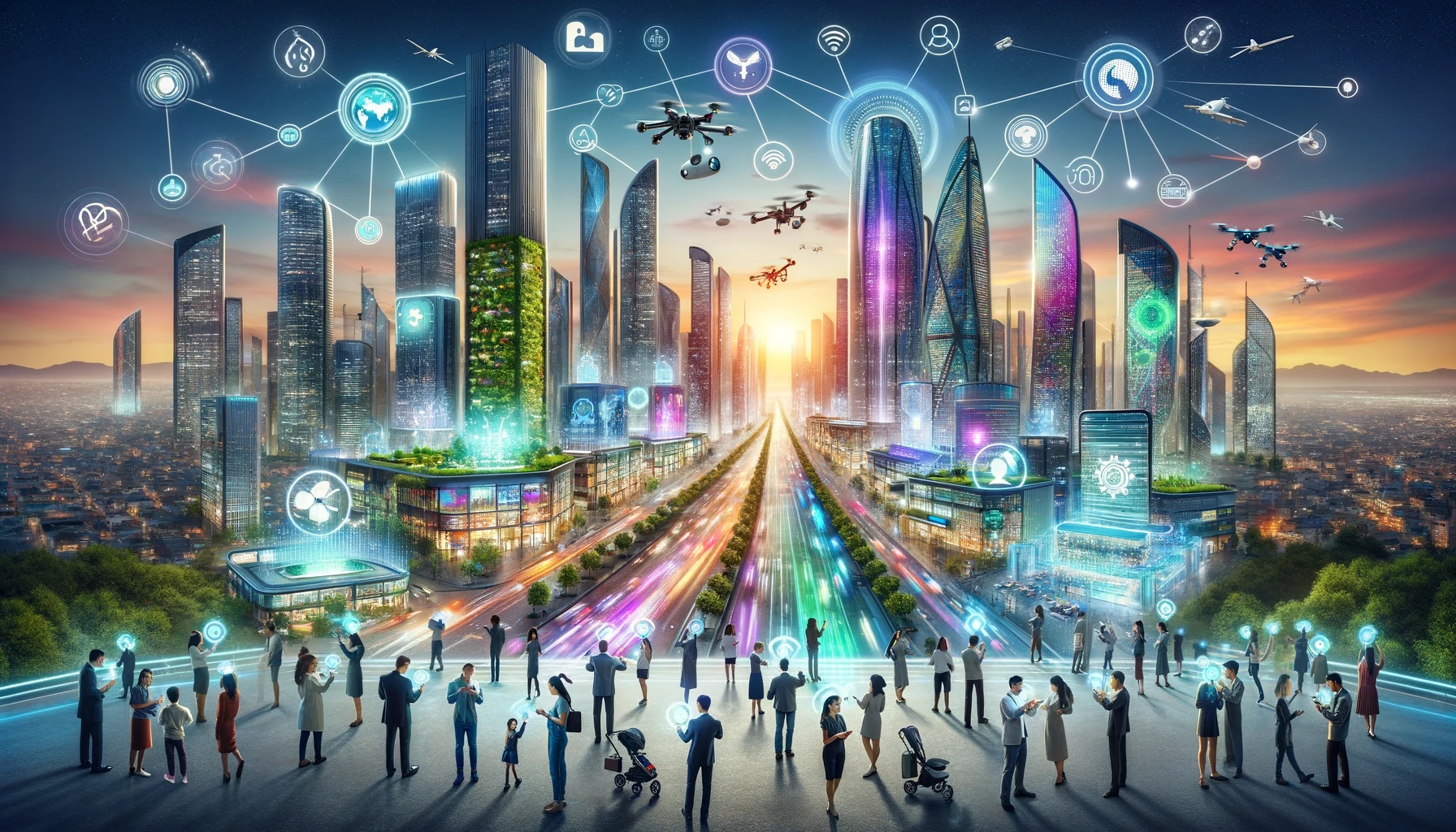Introduction: Envisioning the Future
As we leap into 2024, the concept of smart cities is no longer just a visionary idea; it’s becoming our reality. Thanks to groundbreaking advancements in telecommunications, cities around the globe are transforming into intelligent urban ecosystems. These smart cities, powered by innovative tech, are set to redefine our urban landscapes, making them more livable, efficient, and sustainable. So, what’s the role of telecommunications in this urban revolution, and how is it shaping the future of our cities? Let’s dive in and explore the symbiotic relationship between smart cities and telecommunications, unraveling how they’re building the future together in 2024.
The Backbone of Smart Cities: Telecommunications Infrastructure
Telecommunications is the lifeblood of smart cities, providing the critical infrastructure needed to collect, analyze, and manage data in real-time. High-speed internet, 5G networks, and IoT (Internet of Things) connectivity are pivotal, enabling everything from smart traffic management systems to real-time energy grid adjustments. In 2024, we’re seeing an unprecedented acceleration in telecom infrastructures, with 5G networks expanding their reach, offering faster, more reliable connections that power the myriad technologies smart cities rely on.
Revolutionizing Urban Services through IoT and 5G
The integration of IoT and 5G technology in urban environments is revolutionizing city services and utilities. Imagine traffic lights that adjust in real-time to traffic flow, significantly reducing congestion and emissions, or smart grids that optimize energy consumption based on real-time data, enhancing sustainability. In 2024, these scenarios are not just possibilities—they’re becoming everyday realities. The role of telecommunications in facilitating these changes is crucial, ensuring seamless communication between devices and infrastructure.
Enhancing Quality of Life with Smart City Solutions
The ultimate goal of smart cities is to enhance the quality of life for their residents. In 2024, we’re witnessing how telecommunications-driven solutions are making urban living more convenient, safe, and enjoyable. From smart public transportation systems that minimize wait times to intelligent building management systems that ensure optimal living conditions, telecommunications is at the heart of creating more responsive, user-friendly urban environments.
Sustainability and Environmental Stewardship
Sustainability is a core principle of smart cities, and telecommunications technology plays a vital role in achieving greener urban environments. Through advanced data analytics and IoT applications, cities are better equipped to monitor and manage their environmental impact. For example, smart waste management systems optimize trash collection routes and schedules, reducing fuel consumption and emissions. In 2024, the push towards sustainability is stronger than ever, with telecommunications acting as a catalyst for environmental stewardship.
The Challenges Ahead: Privacy, Security, and Equity
While the future looks bright, the journey towards fully realized smart cities is not without its challenges. Privacy and security concerns are at the forefront, as the vast amount of data collected and processed by telecom networks poses significant risks. Additionally, ensuring equitable access to the benefits of smart city technologies remains a pressing issue. Addressing these challenges is crucial for building inclusive, secure, and resilient urban futures.
Case Studies: Smart Cities Leading the Way in 2024
To illustrate the impact of telecommunications in smart cities, let’s look at a few examples from around the world. [Here, insert brief overviews of leading smart cities in 2024, focusing on innovative telecommunications applications and their outcomes. Unfortunately, without real-time data, specific examples cannot be provided, but cities like Singapore, Amsterdam, and Stockholm are often cited as pioneers in this space.]
Conclusion: Building the Urban Future Together
As we look towards the horizon of 2024, the interplay between smart cities and telecommunications is more critical than ever. Together, they’re not just building infrastructure; they’re crafting the foundations for more sustainable, efficient, and enjoyable urban living experiences. The journey is complex and fraught with challenges, but the potential to revolutionize our cities is immense. By continuing to innovate and address the hurdles head-on, the dream of truly smart cities is within our grasp, promising a brighter urban future for all.
